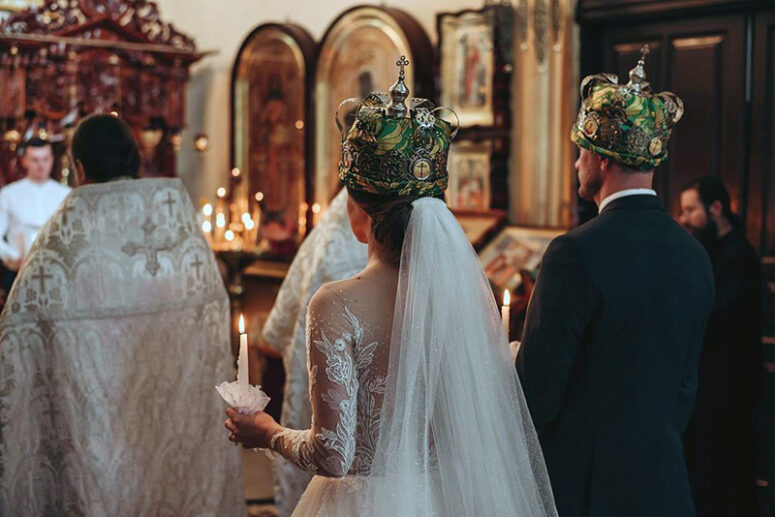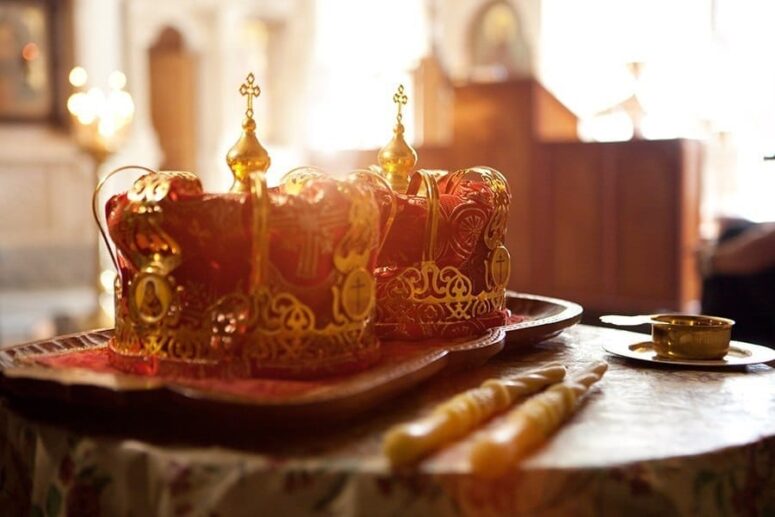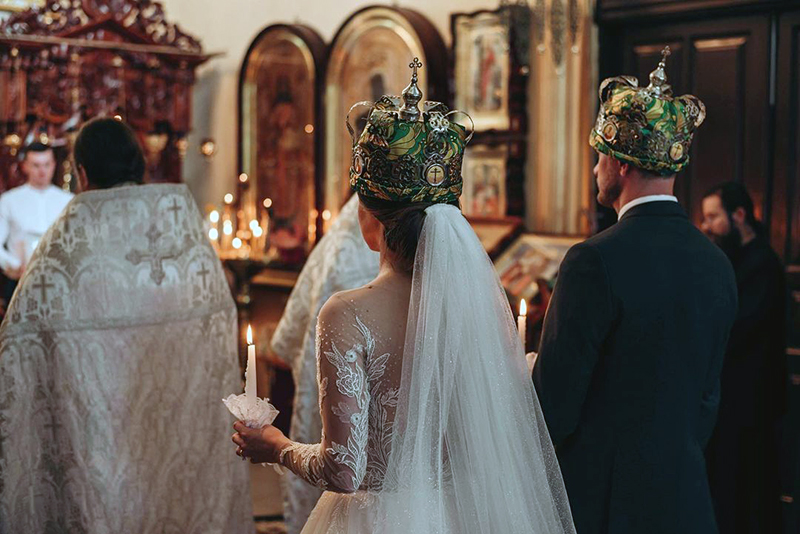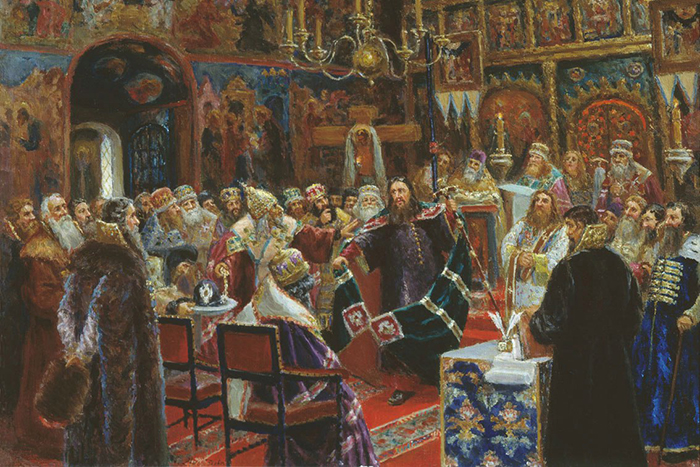
The scripture refers to marriage and family multiple times. It presents an account of its institution (Genesis 1:28), describes its nature (Genesis 2:24, Matthew 19:6), Ephesians 5:31), and lays out the expectations from the spouses, among many other things. Yet it is largely silent on the ceremony of marriage. The newly formed Church, therefore, was faced with the formidable task of establishing the order of marriage.
The oldest reference to the rite of matrimony at church is found in the works of Ignatius of Antioch, a holy martyr and a disciple of the Apostles who lived in I – II centuries AD. In his epistle to Polycarp, he asserts that marriage must conform to the will of God, and therefore requires the blessing of a bishop. At the time, the church had no sacrament of marriage per se. The wedded couple sanctified their marriage by participating together in the sacrament of the Eucharist.
In the II – III centuries, Christian writer and theologian Tertullian wrote that the Christian wedding ceremonies followed the established Greco-Roman traditions, excluding the elements of Paganism. The partners in the marriage sought the blessing of their bishop or presbyter. Some common rituals included joining hands, placing wreaths, wearing a wedding gown, and holding a wedding feast. Regarding the wedding feast, Tertullian remarked, ‘The Lord prohibits the celebration of a wedding no more than he prohibits giving a name to a child.”
At the beginning of the fourth century, the Christian church still had no established wedding ceremony. Later in that century, not only did the prosecution of Christians stopped, but Christianity became the official religion of the Roman empire. The situation of the Christian church changed.
Throughout the fourth century, the traditional wedding ceremony did not change in any fundamental way, except for the attendance of the bishop or presbyter at the wedding feast. As mentioned by Saint John Chrysostom the priest at the wedding read prayers for the blessing of the marriage. These were the prayers to be read during the feast, not at the church service. It appears that every Christian couple considered it their duty to invite a clergyman to their wedding feast. Yet, the 54th Canon of the Synod Of Laodicea reads, “MEMBERS of the priesthood and of the clergy must not witness the plays at weddings or banquets; but, before the players enter, they must rise and depart.” The existence of this rule is indirect evidence that at least some of the Christian weddings fell short of the standards of piety and chastity expected of them.
As such, the established order of the church wedding dates back to the fifth century. It existed separately from the liturgy, but never lost its connection with it; at least in the Eastern Church, taking the Holy Communion was always a part of the rite of matrimony.

Over centuries, elements of the secular wedding ceremony were also integrated in the order of the Christian wedding. The first known description of the wedding order is found in the work of the Byzantine historian Theophylact Simocatta where he describes the wedding of Emperor Mauritius in 582. The Patriarch conducted the festive service during which the order of marriage was performed on the betrothed. It included joining hands, laying of the crown, attendance at the Eucharist, singing the wedding song and sharing the first cup, and a wedding feast.
Eighth-century books of common order describe a somewhat different order of church marriage. It consisted of a litany, prayer (third prayer after the wedding in the modern rite), laying of the wreaths and joining hands with the blessing of the priest, second prayer (fourth prayer in the modern rite), the Eucharist and the drinking of the first cup. This order was practised up until the eleventh century.
From that point, new elements were added to the wedding order. Some came from the order of the Divine Liturgy. Among the new additions were the reading of Psalm 127 at the beginning of the order, the chanting of the prayer “Lord Our Father” before Communion and sharing of the cup, and additional prayers for the blessing of the marriage. Frequently, the order started with the chant “Blessed be our Lord…”, heard at the beginning of the liturgy today.
From the 15th century, the rite of matrimony also includes the reading of the Apostle and the Gospel.
Unfortunately, the practice of joint attendance of the Eucharist by the wedded couple disappeared by the 17th century, when infrequent communion became the norm, while the prerequisites to taking communion became stricter. The present order of church marriage still does not include Communion, although a growing number of churches are making attendance of the couple at the Eucharist a prerequisite to their marriage at church.
The modern order of marriage consists of two parts – betrothal and crowning. It differs from its predecessors by the number of prayers but remains essentially the same. It still includes the blessing of the couple by the priest, the reading of the old prayers and Psalm 127, the laying of wreaths, the reading of the Apostle and the Gospel, and the prayer Lord Our Father.
Starting from the 20th century, the Church has practised serving wedding liturgies, which include the rite of matrimony. The practice is still not very common, but it represents an important first step in the return to the tradition of joint attendance of the wedded couple in the Eucharist.
The evolution of the rite of church marriage teaches us that it is a living tradition that the Church has adapted to its time, without changing it in the essence.




